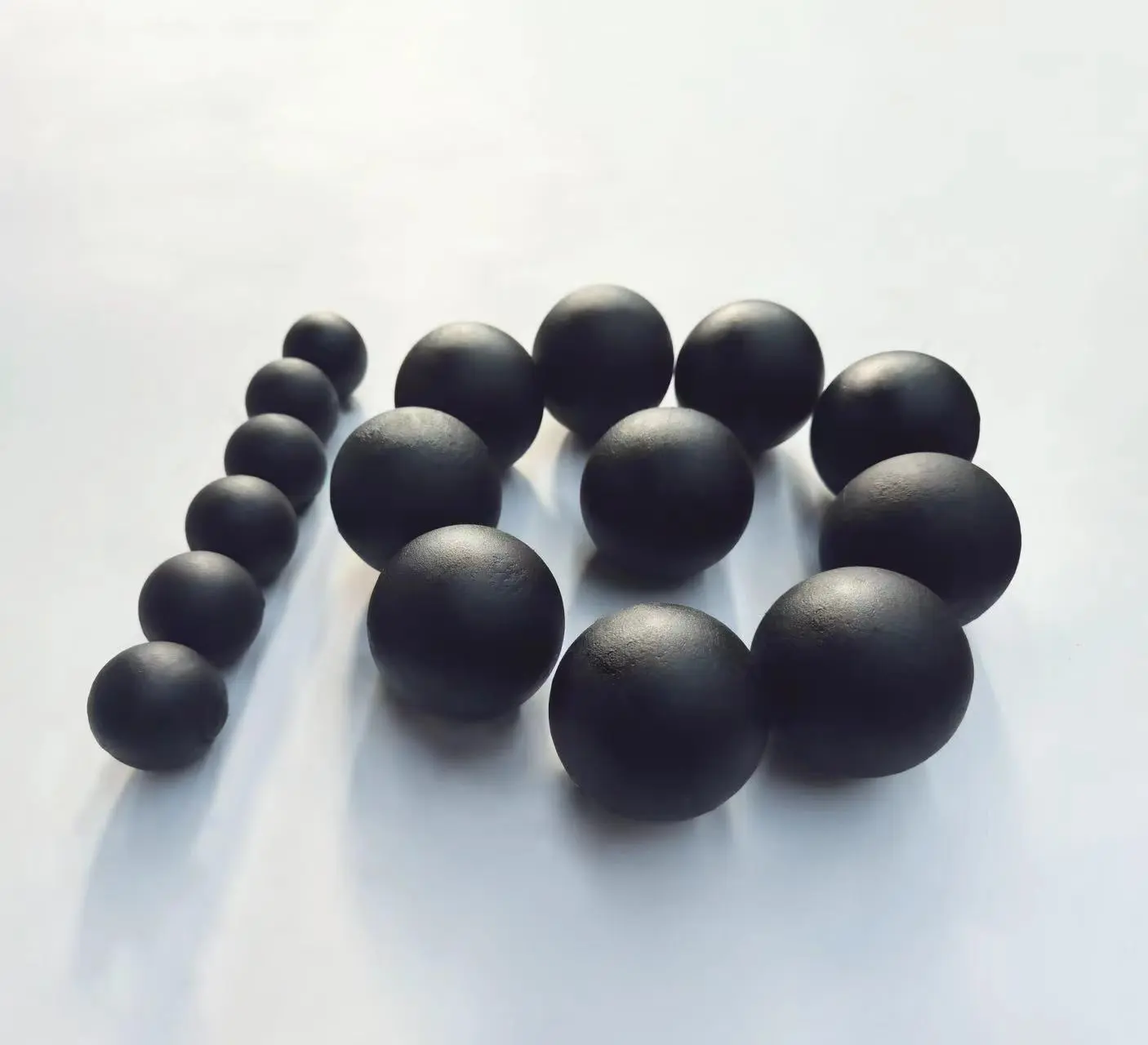Grinding Ball Composition: Explore the materials and composition of grinding balls suitable for nickel mining applications.
2024-06-03 16:41:26
As a professional in the mining industry, understanding the intricate details of grinding ball composition is paramount. In nickel mining, where the extraction process demands precision and efficiency, the choice of can significantly impact production output and operational costs. In this comprehensive direct, we dive into the materials and composition of crushing balls custom fitted for nickel mining applications, shedding light on the significant variables that drive execution and reliability.

1. The Part of Crushing Balls in Nickel Mining
Grinding balls serve as fundamental components in the extraction handle of nickel mining. These circular objects are entrusted with pulverizing the crude mineral into fine particles through the handle of comminution. The proficiency of this crushing prepare straightforwardly impacts the generally efficiency of nickel mining operations. Subsequently, selecting the fitting composition of crushing balls is basic to accomplish ideal execution and cost-effectiveness.
2. Understanding Crushing Ball Composition
Grinding balls are made from a assortment of materials, each advertising unmistakable properties that cater to particular mining applications. Common materials utilized in the generation of pounding balls incorporate manufactured steel, cast steel, cast press, and ceramic. The composition of these materials decides significant characteristics such as hardness, wear resistance, and affect durability, which are crucial for withstanding the thorough conditions experienced in nickel mining.
The choice of fabric for grinding balls is affected by a few components, counting the abrasiveness of the metal, the wanted last molecule estimate, and the generally productivity of the pounding handle. For illustration, manufactured steel balls are favored in applications requiring tall affect resistance and toughness, whereas ceramic balls might be favored in circumstances where negligible press defilement is desired.
Furthermore, the alloying components display in the composition of pounding balls can altogether impact their execution. Alloying components such as chromium, manganese, and molybdenum can upgrade the hardenability and wear resistance of steel balls, making them more reasonable for high-abrasion situations. On the other hand, tall carbon substance in cast press balls can give expanded hardness but may compromise sturdiness and brittleness.
In summary, understanding the composition of grinding balls is crucial for selecting the most appropriate type for specific grinding applications, ensuring optimal performance and cost-effectiveness in the long run.
3. Forged Steel Grinding Balls: Strength and Durability
Produced steel pounding balls are eminent for their uncommon quality and strength, making them a favored choice for nickel mining operations. Composed basically of carbon and alloying components such as chromium and molybdenum, manufactured steel balls show tall hardness and wear resistance. Their strong development empowers them to withstand the seriously affect and scraped spot experienced amid the crushing prepare, guaranteeing delayed benefit life and steady performance.
4. Cast Steel Pounding Balls: Flexibility and Performance
Cast steel crushing balls offer flexibility and execution reasonable for different nickel mining applications. Delivered by casting liquid steel into molds, these balls have fabulous hardness and affect resistance. The composition of cast steel balls can be custom-made to meet particular necessities, permitting for customization based on components such as metal sort and crushing conditions. With their solid execution and cost-effectiveness, cast steel pounding balls are broadly utilized in nickel mining operations worldwide.
5. Ceramic Crushing Balls: Tall Wear Resistance and Chemical Inertness
Ceramic crushing balls are characterized by their remarkable wear resistance and chemical idleness, making them perfect for requesting nickel mining situations. Composed of alumina or zirconia, ceramic balls show predominant hardness and scraped area resistance compared to conventional steel partners. Furthermore, their non-reactive nature guarantees negligible defilement of the prepared metal, keeping up the virtue of the last item. In spite of the fact that ceramic crushing balls command a higher cost point, their long-lasting execution and decreased support prerequisites legitimize the speculation for nickel mining operations.
In conclusion, the choice of grinding balls plays a essential part in optimizing the productivity and cost-effectiveness of nickel mining operations. Whether utilizing fashioned steel, cast steel, or ceramic pounding balls, understanding the materials and composition is fundamental for accomplishing craved results. By leveraging the characteristic qualities of each sort of crushing ball, mining companies can upgrade efficiency, minimize downtime, and eventually, drive economical development in the nickel mining segment.
Contact Us
Are you seeking reliable grinding ball solutions for your nickel mining operations? Look no further! We are a professional manufacturing supplier with a GMP factory, boasting a large inventory and complete certificates. Our services include OEM support, fast delivery, and tight packaging, ensuring your operational needs are met with efficiency and precision. Contact us at sunnyqin@nhgrindingmedia.com to explore how we can support your nickel mining endeavors.
References
1. International Journal of Mineral Processing. "Effects of mixtures of grinding media of different shapes on milling kinetics." (2009).
2. Bwalya, M. and Moys, H. M. "Grinding media quality assurance for the comminution of gold ores." (2017).
3. Rao, P., et al. "Optimization of grinding media size and quality for the production of high-performance cement." Cement International, 13(2015), pp. 68-73.
4. King, R. "Grinding ball selection for gold ore processing." Mineral Processing and Extractive Metallurgy Review, 32(2011), pp. 100-108.
5. Smith, R., et al. "The influence of grinding media on liberation of minerals." Journal of South African Institute of Mining and Metallurgy, 112(2012), pp. 587-594.
.webp)
.webp)
.webp)
.webp)
 - 副本.webp)
.webp)








